One trip to the store is all it takes to signal that the end of summer is quickly approaching. Summer merchandise is on clearance, fall clothes are on the racks, and school supplies are filling the shelves. We’ve scoured our archives to bring you back-to-school shopping from the past.
In the 1800s, back-to-school clothes usually meant something hand sewn. Garments were individually made, and back-to-school ads featured fabrics like calico and wool.
By 1890, factories mass-produced garments, and customers could purchase ready-to-wear school clothes from stores or mail-order catalogs.
School clothes weren’t the only thing on many parents’ lists. This 1907 ad listed ink, pens, blotters, pencils, and erasers – slightly different than today’s supply lists.
Back-to-school clothing ads provide a glimpse into the fashion trends of days gone by. These 1921 ads feature girls’ sailor dresses and boys’ knicker suits, considered fashionable then.
As department stores became more common, they changed how many Americans shopped. Department stores usually offered higher-priced goods on higher floors, lower-priced items, and close-outs in the basement – hence the term “bargain basement.”
The Great Depression left most families feeling a financial pinch, and even the bargain basement was too expensive for many. To help ease the pain, stores began offering layaway plans. Parents could purchase items and then pay for them in installments. Stores agreed to hold the merchandise until items were paid in full. This ad tells customers that an 18-cent deposit would hold either a girls’ skirt or a boys’ jacket.
Most back-to-school shopping lists include new shoes, and in 1941, a good pair of leather saddle shoes cost around $3.00.
Sweater sets, full skirts, and boys’ dungarees were all the rage for back-to-school shopping in the 1950s.
Another popular 1950s trend was penny loafers. Did you know that a call at the payphone originally cost two cents? Thus, the shoes provided coins for an emergency call.
In the 1970s, calculators entered the classroom and could be found on many back-to-school supply lists. The 1980s and beyond brought an increased emphasis on designer labels, and many parents grappled with the costs of designer brands.
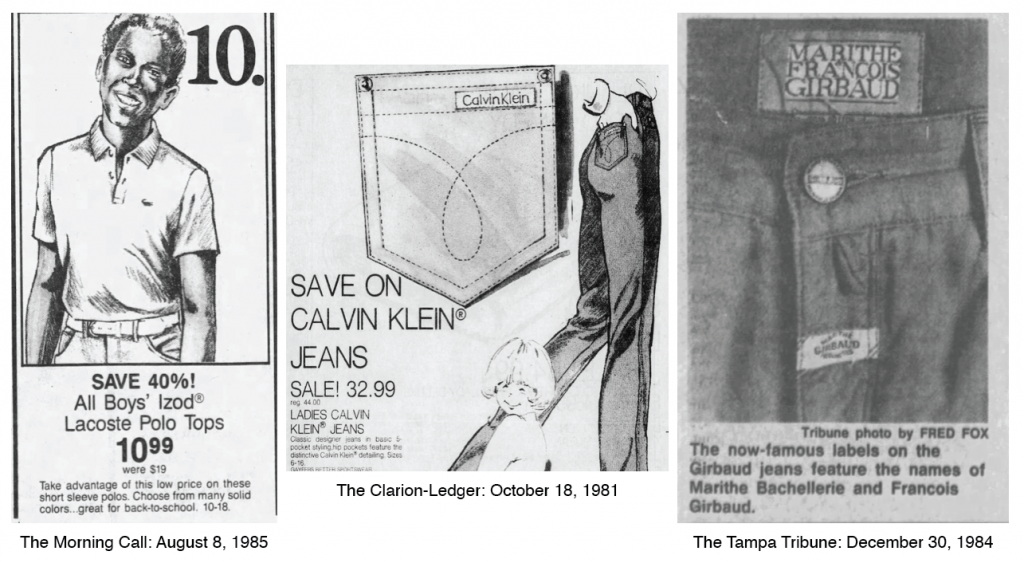
Fads like stretchy stirrup pants, leg warmers, and shoulder pads came and went. In the 1990s, students heading back to school hoped for designer sneakers and other athletic wear.
Have you started back-to-school shopping in your family? What are your back-to-school shopping memories? Please share them in the comments below and learn more about back-to-school shopping over the years on Newspapers.com™ today!


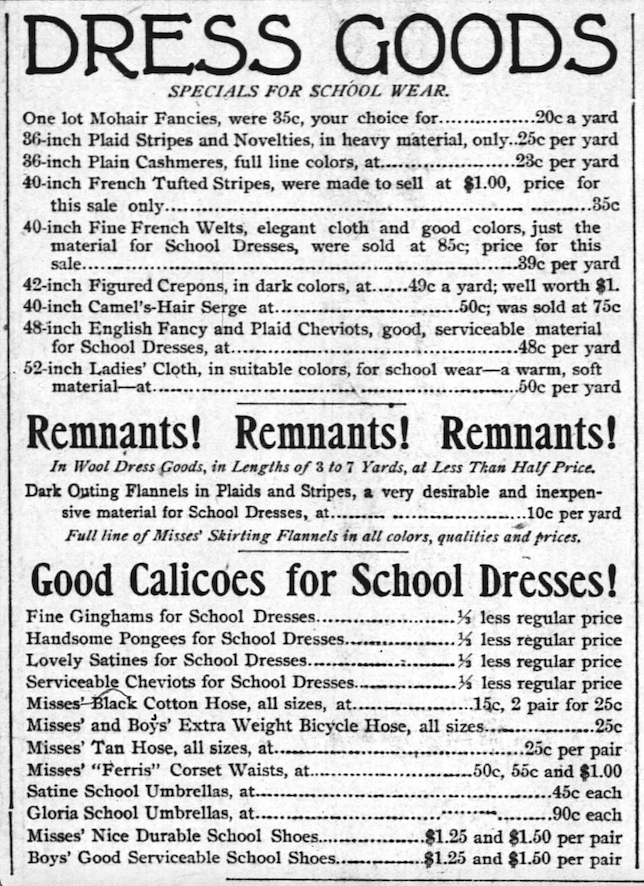

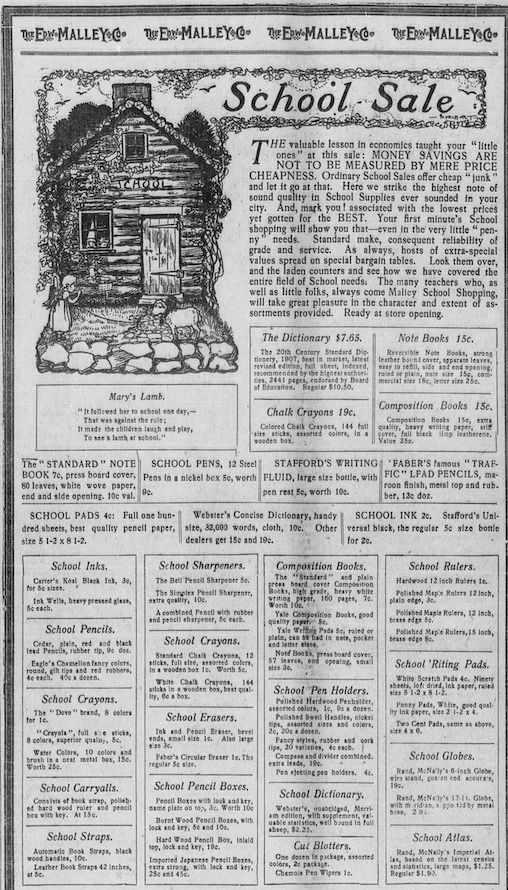
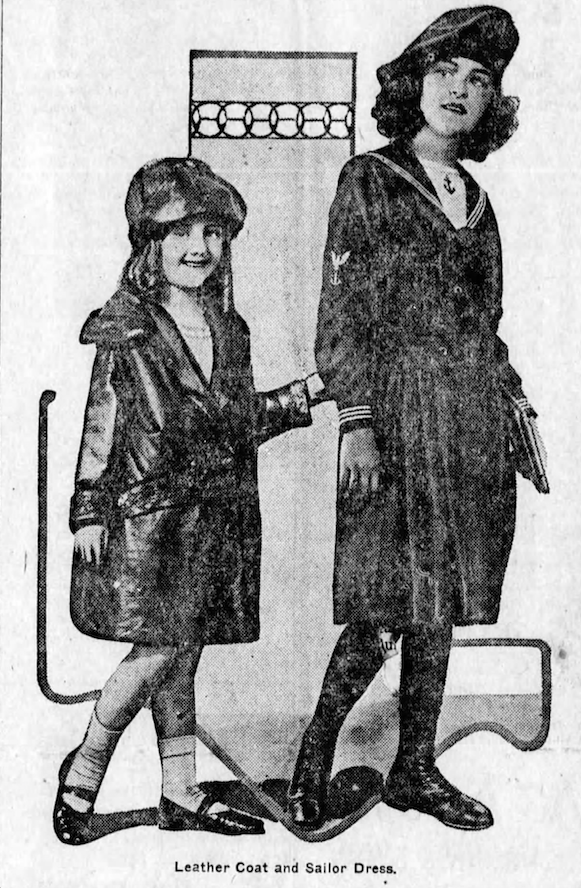
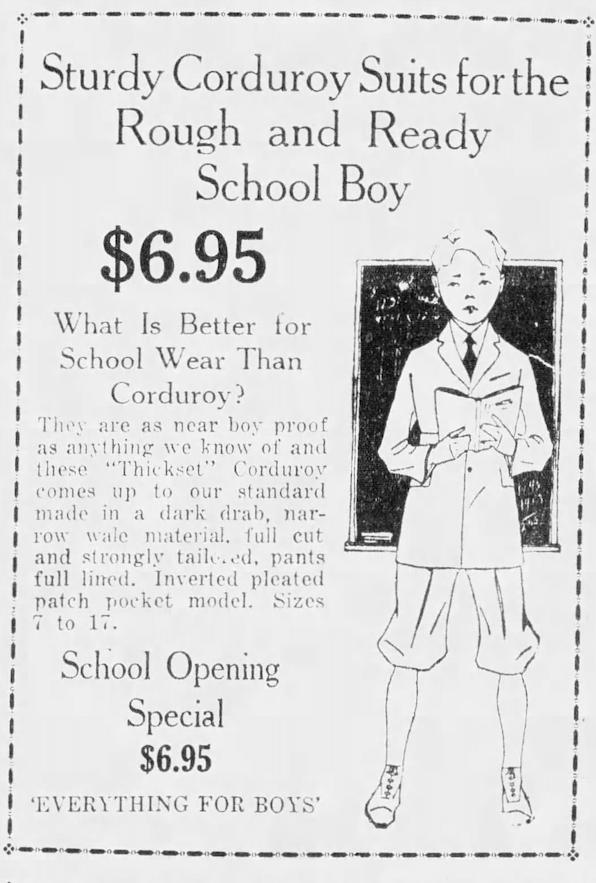

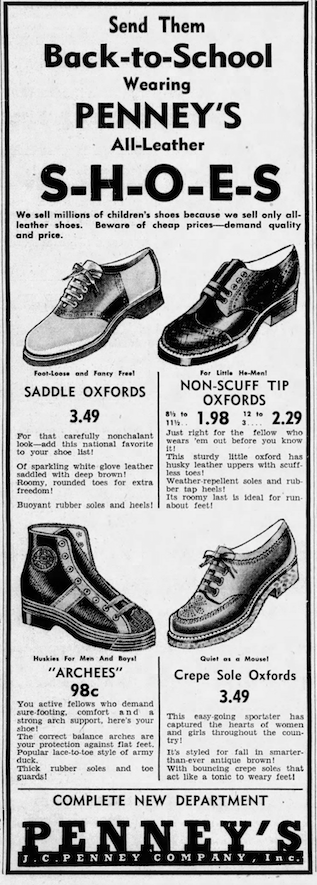

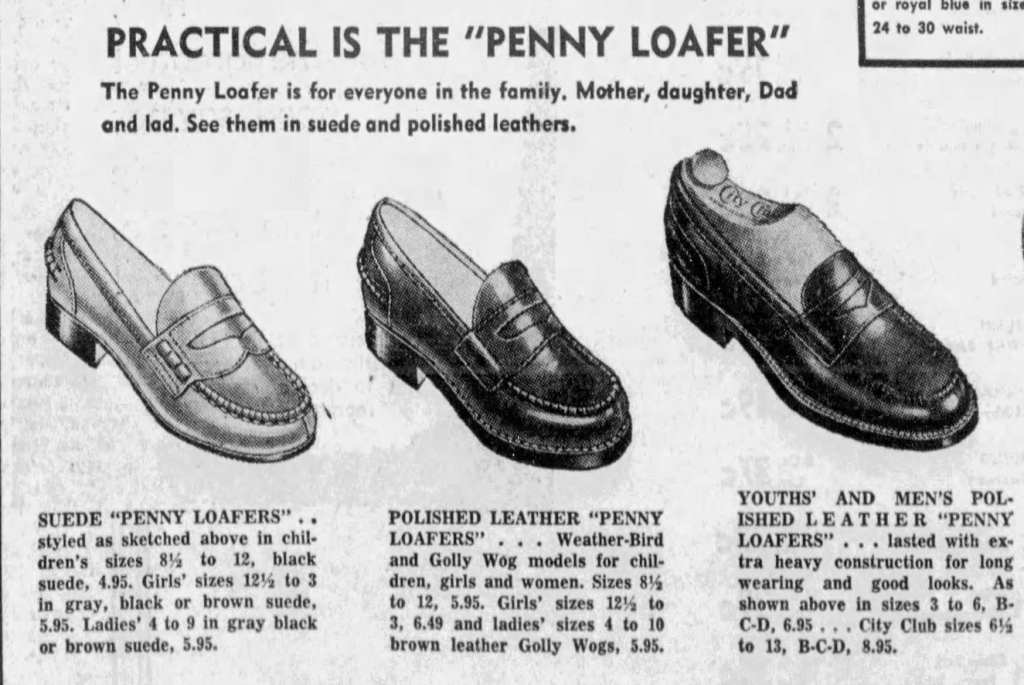
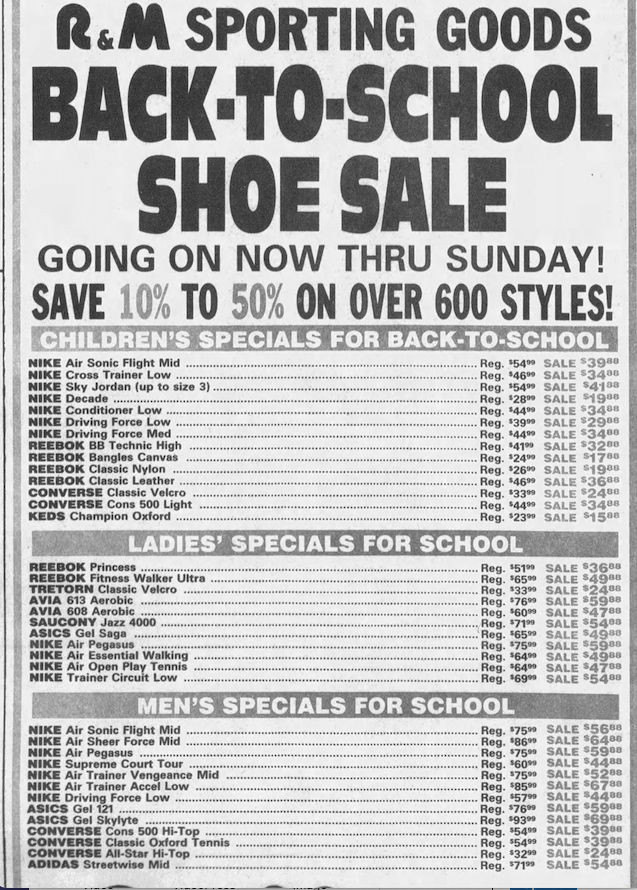
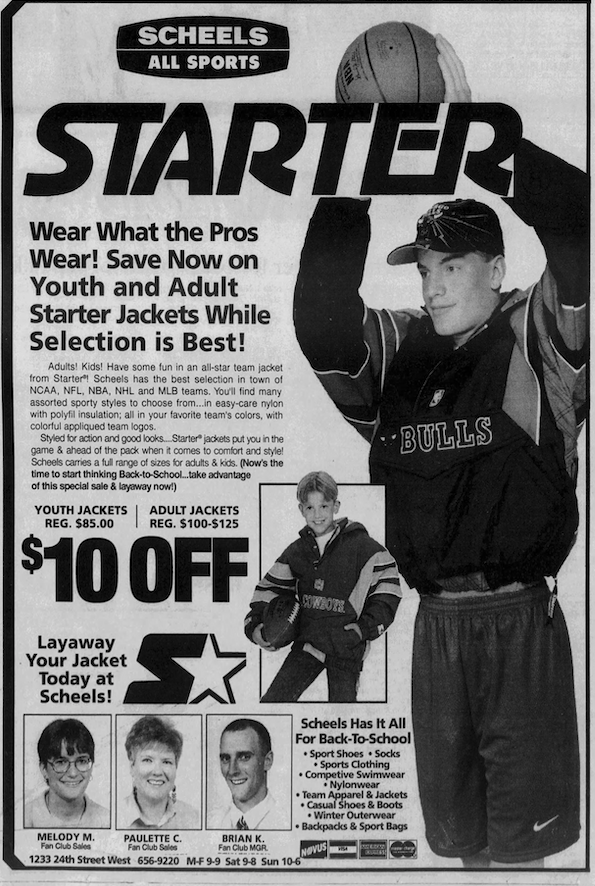
When will you touch on Oregon/Washington again? Your update section has very little progress this year in general. I think Old Joe’s economy is effecting this site.
*affecting*
No need, or place, for political comment here on a story about vintage clothes advertising. Really – just, no.
I thoroughly enjoyed seeing and reading about school clothing and supplies in the past! Having gone to school in the 50s, it was fun to see how things have changed. I used to love getting ready for school! Thank you!.
I grew up in Portland Oregon and raised my 3 children in the superbs like Beaverton, Aloha and Hillsboro (depending upon the year). When my kids were little, my go to’s were JCPenny’s, Sears, Kmart, Fred Meyers and occasionally GI Joes. I also used the Good Will stores throughout their lives as there were times I couldn’t afford things. I would ALWAYS buy NEW coats, shoes, socks and under ware, but the rest of the clothes could be found at the local Good Will in Hillsboro. (Great finds back in the day). If we couldn’t find it there, then we’d start to make our way to Freddy’s (Fred Meyers) and if that was a bust, we’d drive to Washington Square for the rest of the stores, hitting Kmart on our way there. I’d have to take a few paychecks to cover everything, so would start in early August. School supplies came from the Dollar Tree. 🙂 (I was a single mother most of their growing up years.).
My school supply list for elementary school : 1 Big Chief tablet and 1 No.2 pincle
My first year in school (1941) depression was still hanging heavy over northestern Louisiana. Mom made our clothes, most of which were from flour sacks and were appropriately called flour-sack dresses. That was the before school preparation. On the first day of school, children were sent home with a list of supplies needed for the year. This included, of course, the Big Chief writing tablet and pencils. I remember two other items which were a big bath towel and a number of sewing spools strung on a cord (I don’t remember how many). The towel was for spreading on the floor for an afternoon nap and the spools were for learning to count.
Thanks for sharing. This was so interesting; I love the use of the thread spools.
Thank you for your memories! My Mom used to tell me how those flour sacks provided for all 10 sisters’ clothing, which my Grandmother and the girls made. Her memory was positive regarding how excited they would be to see the new prints. Conversely, she remembered how she and all of her sisters were known as the “poor” kids because of those flour sacks. Today, we take way too much for granted. I work in a school and hear the kids put others down because of non-popular clothing and non-labeled shoes. It hurts to hear this. I always step in when I can but unfortunately the damage has already been done to the child who could not afford to wear “what is expected by others.” I will stick to the flour sack dresses and be proud of that history.
Thanks for sharing. It’s amazing how much has changed in the last few generations. My uncle (born in the 1940’s) talks about how his father was given specific instructions as to what patterns to pickup when buying flour. He talks about his mother making shirts for him to wear to school from the flour sacks and sees it as a sign of her love and dedication to her family. My mom (born in the 1950’s) complained that her mom made her old fashioned below the knee dresses and wouldn’t let her wear miniskirts to school like the other girls. It’s interesting how different 2 children of the same household look back and view things. As a mother of children born in the 2000’s, I only have the skills to do minor repairs on my children’s clothes and while my daughter usually wears pants, when we do buy dresses they are always at or below the knee so she can run and be active without giving an upskirt view.